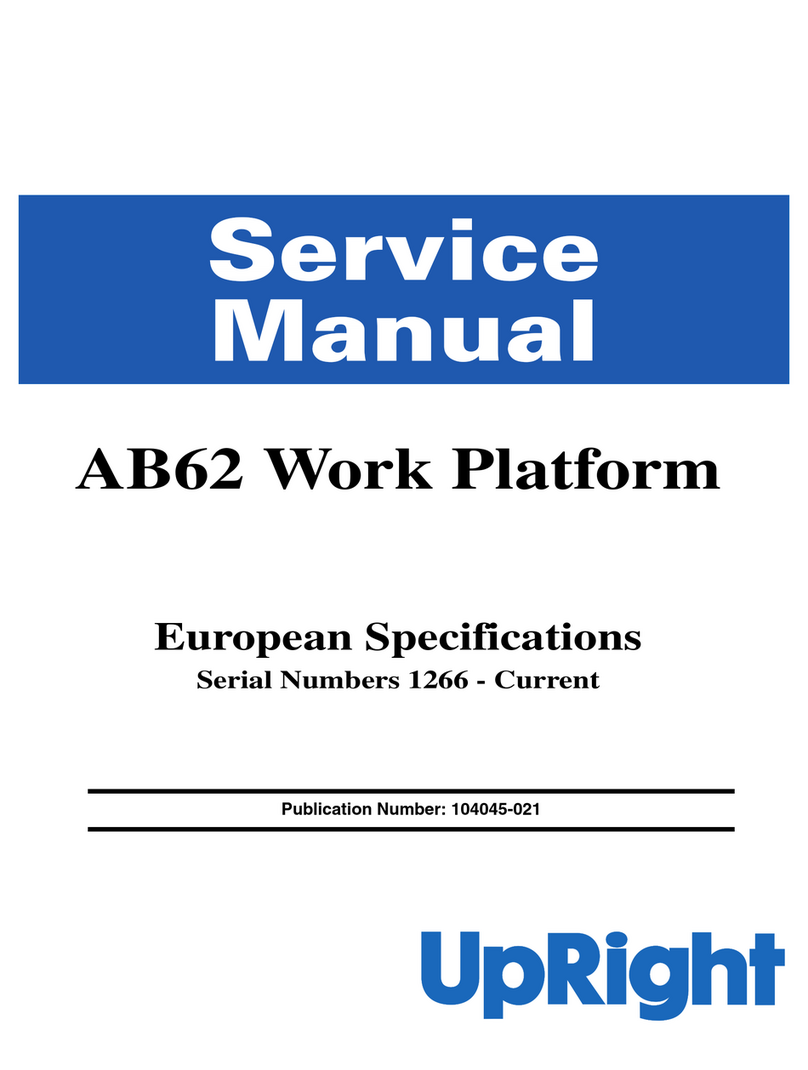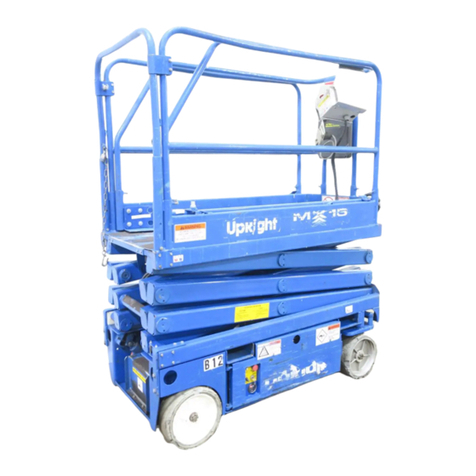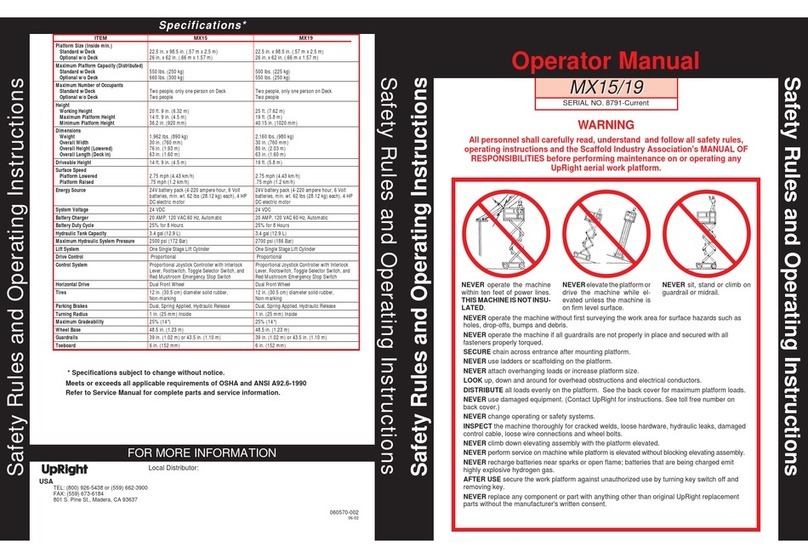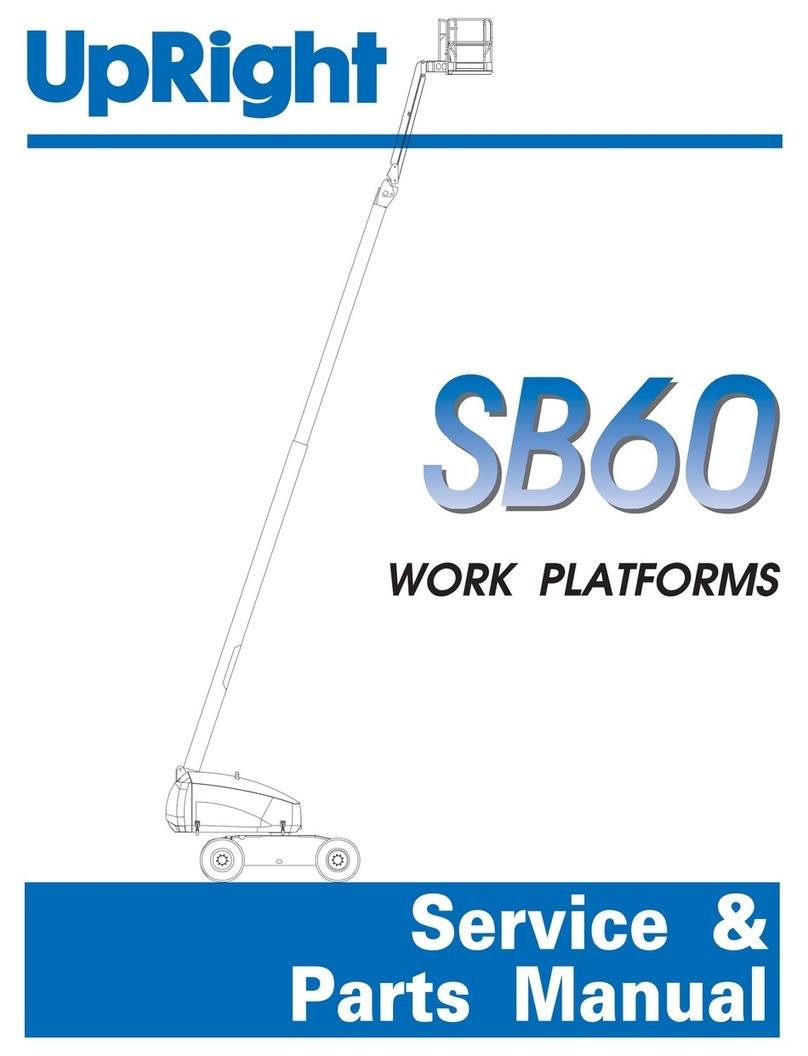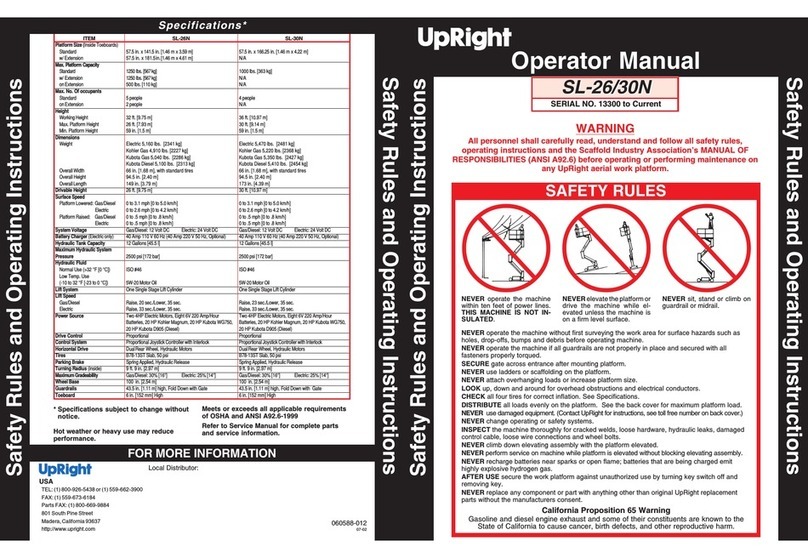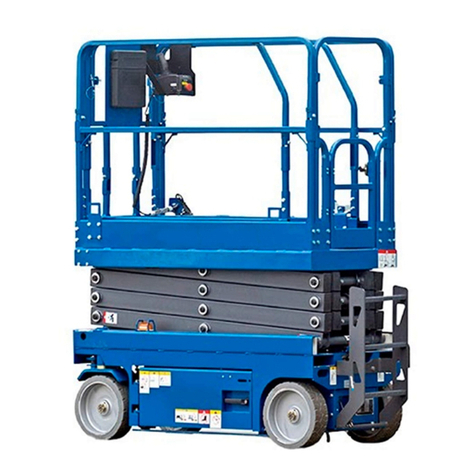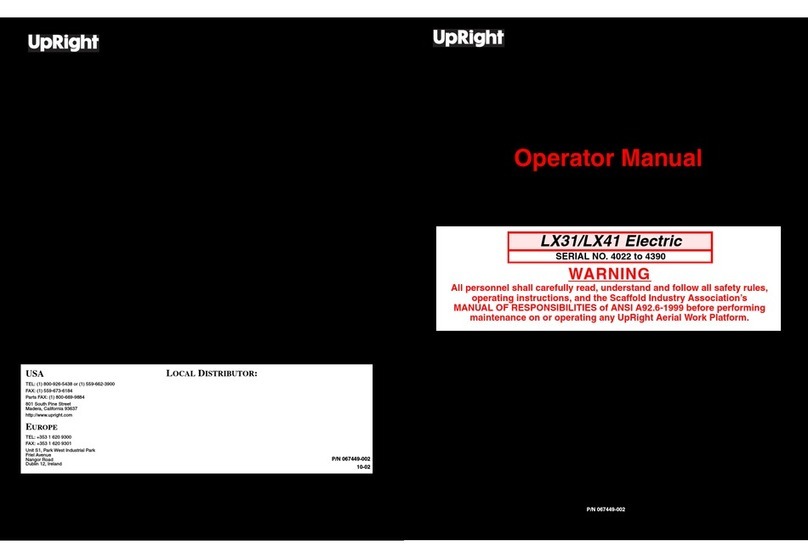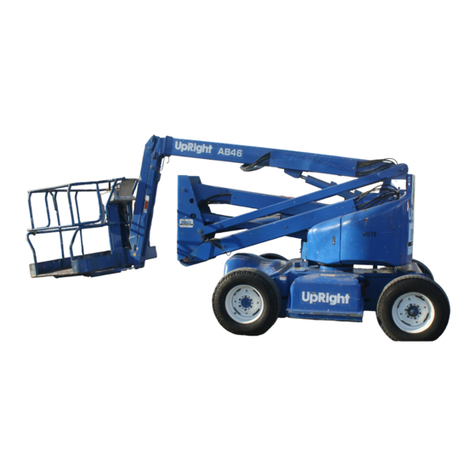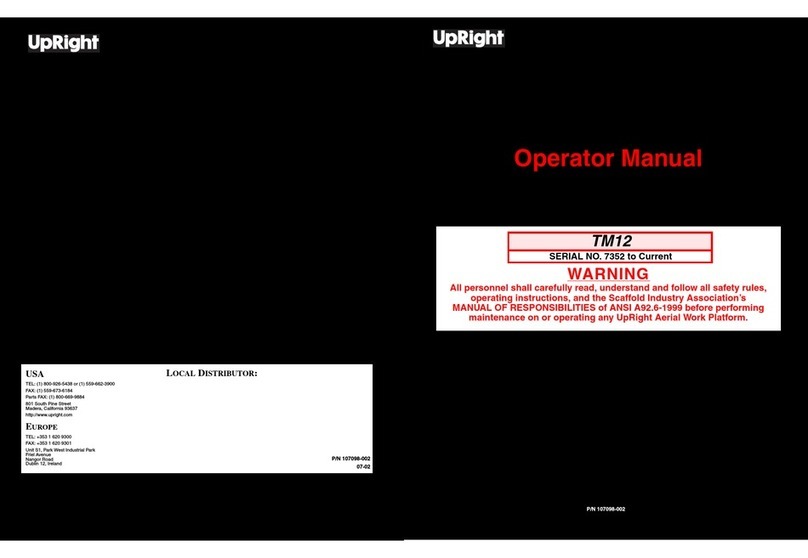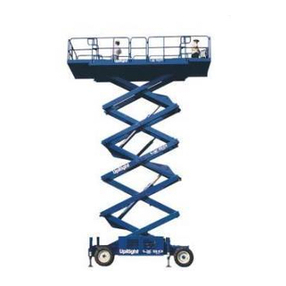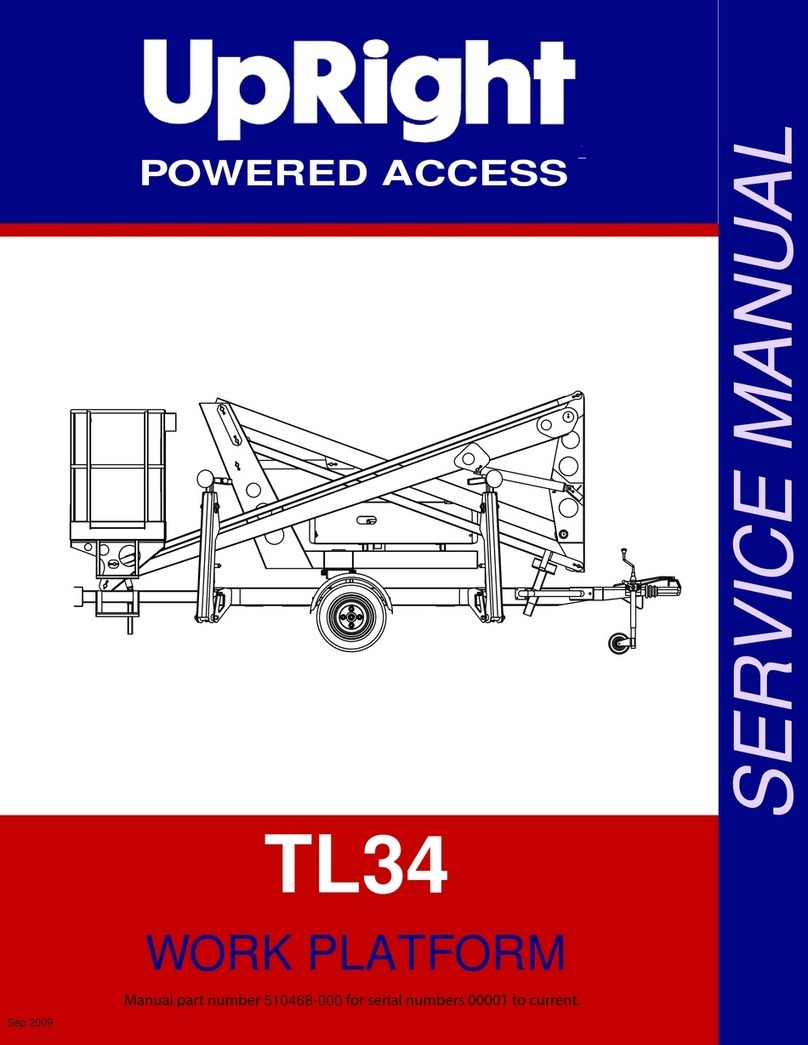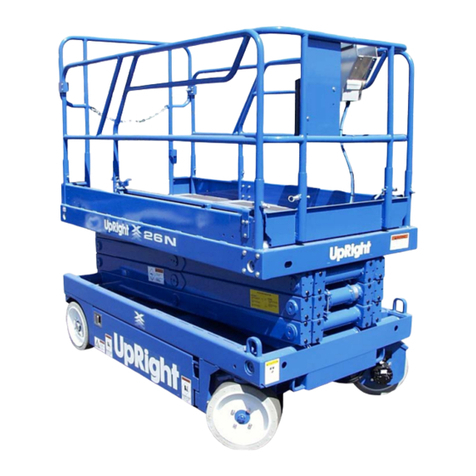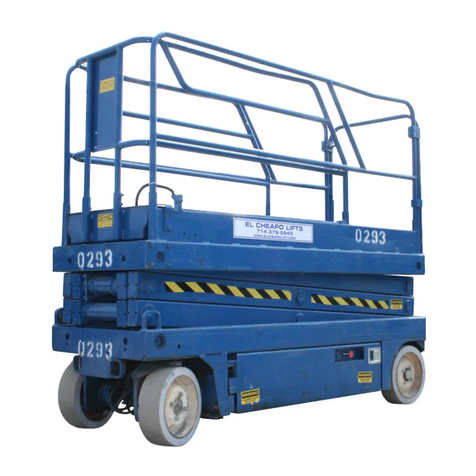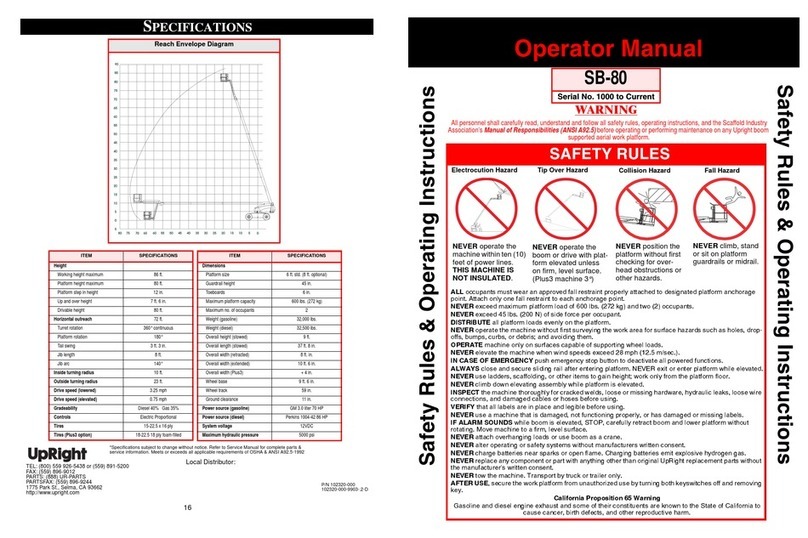
2
Introduction
This manual covers the operation of Bi-Energy
powered models of the AB-46 Articulated Boom. This
manual must be stored on the machine at all times.
Pre-Operation and Safety
Inspection
Carefully read, understand and follow all safety
rules, labels, and operating instructions, then
perform the following steps each day before use.
Perform a complete visual inspection of the entire
unit prior to operating. Check the following areas for
discrepancies:
1. Open panels and check hydraulic components /
hoses for damage or leaks. Check electrical
components / wiring for damage or loose connec-
tions.
2. Inspect chassis, a les, hubs, and steering linkage
for damage, deformation, buckled paint, loose or
missing hardware, and cracked welds.
3. Check tires for damage, punctures, and inflation;
tire pressure must be 75 psi.
4. Check all hoses / cables for wear.
5. Inspect elevating assembly for damage, deforma-
tion, buckled paint, loose or missing hardware,
and cracked welds.
6. Inspect platform and guardrails for damage,
deformation, buckled paint, loose or missing
hardware, and cracked welds. Insure that gate
operates freely and latches securely.
7. Check Hydraulic fluid level with platform fully
lowered.
8. Check battery fluid level (see battery mainte-
nance, page 8).
9. Check fuel level, add fuel if necessary.
10.Ensure that radiator is cold, check coolant level.
Add if necessary.
NEVER remove the cap from a hot radiator.
Hot coolant can cause severe burns.
DO NOT use a machine that is damaged or
malfunctioning. Tag and remove the unit
from service until it is repaired.
SYSTEM FUNCTION INSPECTION
Note: Refer to figures 1 and 2 for chassis and
platform control locations.
1. Before performing the following tests, check area
around machine and overhead for obstructions,
holes, drop-offs, and debris.
2. Turn chassis key switch to chassis, and turn on
(rotate clockwise) emergency stop switches at the
chassis control panel and at the platform control
panel.
Note: The machine may be powered by batteries
or by engine. To power the machine by engine,
press the engine start button to crank the en-
gine; release when engine starts. If engine is
cold: press the preheat button and hold for six
seconds prior to starting diesel models.
3. Push in the chassis emergency stop button and
operate any function switch at the chassis control
panel, function should NOT activate. Repeat for
platform emergency stop button, operating
chassis controls. Return both emergency stop
switches to the on position.
4. Operate each function switch to raise / lower,
e tend / retract, rotate left / right, each section of
the elevating assembly and observe the operation
of the machine. All functions should operate
through full cycle smoothly.
5. Turn chassis key switch to platform.
6. Mount the platform, close and latch the gate, and
attach approved fall restraint to designated
platform anchorage point. Attach only one fall
restraint to each point.
7. Without depressing the foot switch, move the drive
control handle, machine should not function.
8. Depress the foot switch and move the drive
control handle forward and reverse. Observe that
proportional functions operate smoothly, and that
brakes apply quickly after control is released.
9. While depressing foot switch, operate steer
switch to left and right. Observe that steering
wheels turn properly.
10.While depressing foot switch, turn function speed
control knob to desired setting, and operate boom
controls. Observe that boom operates smoothly,
and that upper boom, jib, turret rotation, platform
level, and platform rotation controls operate
proportionally in conjunction with function speed
control knob. Observe that platform maintains
level when boom is elevated.
11.With the upper boom elevated one foot, operate
drive control handle. Observe that drive speed is
limited to creep (1/2 foot [.15m] per second).
Lower upper boom to stowed position.
12.Press the service horn button. Observe that horn
is audible.
